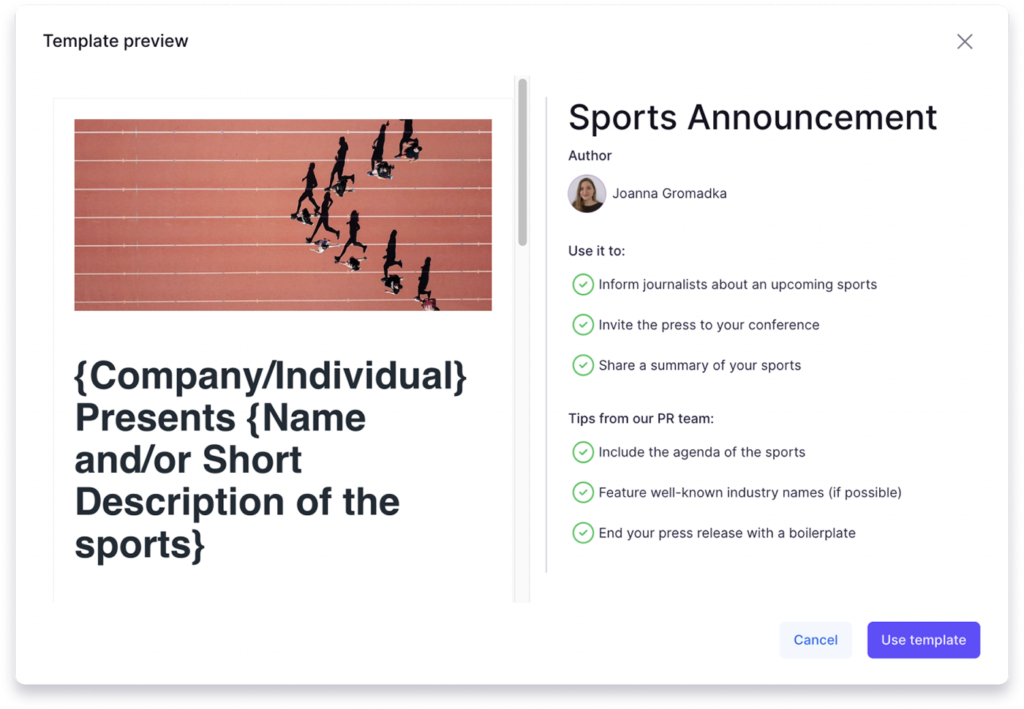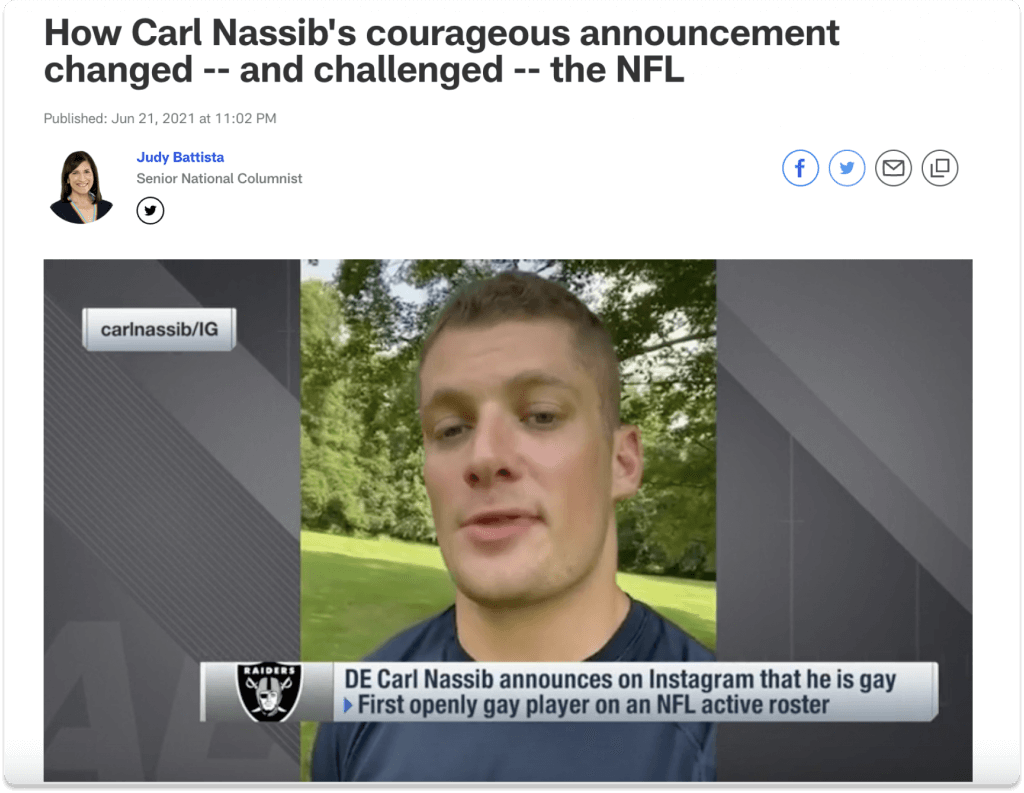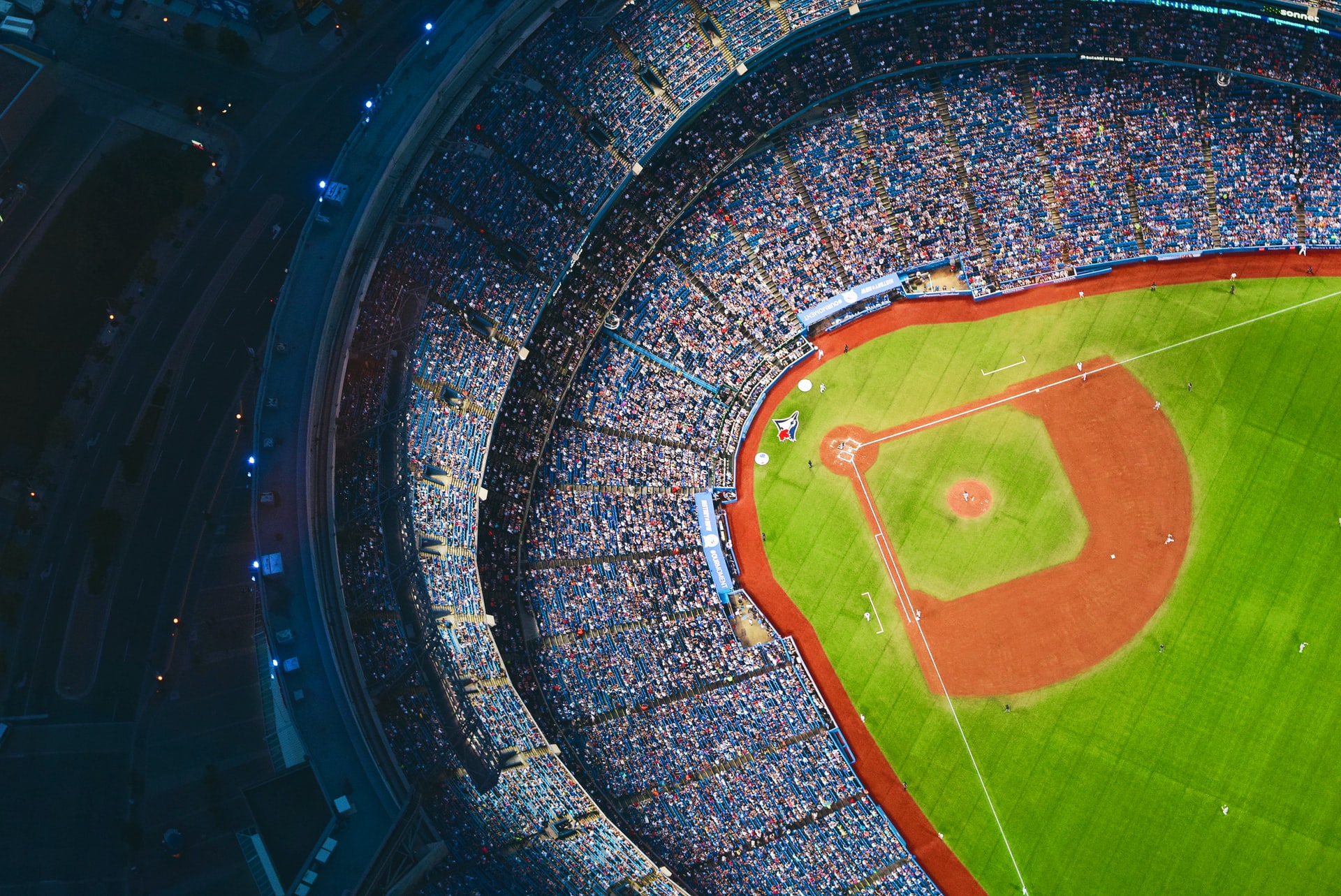The story behind the story defines sports public relations better than any other industry.
Wins and losses are just one part of sports. Teams, athletes, coaches, and broadcasters benefit from sports PR because specialists share stories that attract fans, often for generations. Further, annual sports events depend on publicists to communicate their missions as well as attract ticket and merchandise sales.
During the last few years, sports PR professionals added another ball to their juggling acts when they helped teams and athletes carefully and skillfully communicate and activate social justice initiatives.
The ability for people in the sports industry to candidly communicate everything from statistical breakdowns to emotive stories has never been more important. And most of these stories wouldn’t have been heard without a little help from sports PR experts.
Here’s what's special about sports public relations, and how to do sports PR the right way.
- What is sports PR - definition
- What does a sports PR job entail
- Tools for sports PR
- Sports PR examples
What is sports PR - definition
As the name suggests, sports PR simply described public relations for sports teams and individual players. In other words, it’s about building media relationships with sports journalists, and getting publicity for athletes through earned media channels, both online and offline.
What does a sports PR job entail?
A sports PR specialist may fill several roles throughout a career, including statistician, game day and site manager, and travel advisor.
Today’s sports PR professionals serve national and international audiences, even if they work for teams in “small” media markets because while press organizations have consolidated, folded, or shifted to different formats—messages travel faster and further than at any time in history.
Essentially, a sports PR specialist helps facilitate relationships on every level including between media and teams/athletes, fans, and businesses. The job of sports public relations is to help foster and maintain those ties which take time, patience, Level 1 listening skills, and respecting the roles of everyone involved.
That’s why sports PR professionals must be able to skillfully multitask. That often means listening to athletes’ concerns about media availability to working with a reporter about an all-encompassing story that requires one-on-one interviews.
With all of that in play, it’s also on an experienced sports PR staffer to prepare athletes and coaches for interviews, which may include identifying possible questions and in a sense, rehearsing answers. You don’t want your athlete to read from a sheet of paper, and questions may not be exact, but it allows the interviewee to be as in-tune with a topic as possible, which can be challenging with their focus on practices, physical training, and games.
And if you're the one being interviewed for some reason, get ready with this guide on how to conduct a great interview. It contains over 28 good practices for online and in-person meetings.
Media training further allows sports PR pros to work with individuals to avoid or omit repetitive hiccups such as ums, ahhs, you knows or asking “right?” with every answer. It’s time well spent because those kinds of things will drive audiences batty and take away from intended messages.
Keith Howard, a veteran high school coach who’s spent the last eight years at The Catholic University of America, said the greatest of all time (“GOAT”) athletes are the ones who handle themselves well on the field and behind the microphone.
Sports public relations has the power to shape opinion
At the major levels of sport, an organization may employ several PR specialists. One person may be responsible for gameday activities and media scrums, another for community relations, someone represents players during team activities, another who only works with management or facilities leaders, and so on.
The common denominator is that each group, with help from PR, can sculpt reputations, influence public opinion, shape values, and connect brands, all with the stories they tell. As we’ve seen, they have the power to transform communities with their words and actions. That’s pretty powerful stuff.
In the dynamic and high-profile world of collegiate, Olympic, and professional sports, athletes, and teams can ill afford to allow for reputation-damaging scenarios to adversely impact them.
The ability to have and execute a strategic communications strategy will help build, shape, or change your brand narrative; manage it through challenging times; ensure your position is included in media coverage; engage with and build strong relationships with your key stakeholders and fans; inform social media and marketing strategy, and reduce the ability for your brand narrative to be co-opted or adversely impacted by detractors. - Wesley Mallette, Interim Director of Collegiate Athletics @ University of California, Riverside
And to make any PR campaign or task a part of a bigger strategy, you need to collect data, follow the right PR metrics and anayze them regularly.
We have prepared special guides about relevant PR metrics to follow (and ones to leave behind):
👉🏼 What is UVPM aka Domain Reach in PR? (UVPM metric alternatives)
👉🏼 What is Advertising Value Equivalency in PR? (+ AVE Alternatives)
Here are two additional metrics to follow as a PR pro, along with tips on how to efficiently accomplish them:
👉🏼 Share of Voice in PR: How to Calculate Your Brand SOV
👉🏼 Media Mentions Guide: How to Track Media Mentions Effectively
Tools for Sports PR
Be a skilled writer
The No. 1 skill required for a sports PR professional is to be a good writer. Actually, that’s the No. 1 skill for most industries, although too few take time to refine it. Experienced and respected sports PR pros and sports media are so proficient that their writing skills are often coveted for agency or corporate work.

In addition to being a good writer, sports PR specialists should be
- organized – we’ve heard about best-laid plans but creating and consistently tweaking a strategic sports PR map helps meet the public where it is – and that shifts often
- superior listeners
- avid and curious readers
- clear, concise, and credible communicators
- respectful and responsive to media (promptly answer calls, texts and emails!)
- flexible, because anything can and will happen
Facilitate a story, not become part of it
Power plays are, unfortunately, not unusual, and in today’s social media climate, missteps and mendacities are called out for the world to see. The rush to be first rather than right can wreck reputations as well.
Veteran sports PR pro, Joe Favorito, said it’s important for people who work in the industry to help solve not create problems.
Similarly, Lindsay Jones, a senior writer who covers the NFL for The Athletic said:
I appreciate when someone in NFL team PR will listen to my pitches with an open mind, rather than, to use a sports metaphor, constantly playing defense. Instead of saying why something might not work, let’s have a conversation about why it could work.
Pitch with relevance
Adversarial relationships have no role in any public relations. On the other hand, educated and informed sports PR pros have logical and credible advantages when they pitch stories to the media.
The best relationships I’ve had with PR specialists are when we both understand and respect each other and what both of us are trying to accomplish. I love getting pitches that are specifically tailored for me - my publication, my specific geographic market, or my interests as a reporter. - Lindsay Jones, Senior Writer @ The Athletic
Sports PR examples
Among organizations and athletes that use sports PR effectively include the NBA and within the league, the Golden State Warriors and Milwaukee Bucks.
In the NFL, the Denver Broncos and Baltimore Ravens get high marks by reporters in the industry along with the Tampa Bay Buccaneers, which is the most recent winner of the Pete Rozelle Award given annually by the Pro Football Writers of America to the NFL’s best public relations staff. - Joe Favorito, veteran sports PR pro.
Favorito also noted smaller organizations such as the Professional Bull Riders (PBR), American Cornhole Association (ACA), and individually, tennis superstar, Serena Williams.

To learn how to write a sports press release step-by-step and get inspired by more examples, read How to Write a Sports Press Release article.
But, beyond the standard sports media relations operations, the sports PR is experiencing a turning point. Sports are now being used as a platform for social activism, inspired partly by the Black Lives Matter Movement, and before that former NFL quarterback Colin Kapernick.
We’ve even seen the corporate endorsement of this through Nike’s use of Kapernick in a widely-seen television commercial and on other platforms. This corporate support is another element in brand building, corporate reputation, and corporate social activism.
Recently, NFL player Carl Nassib’s coming out and the overwhelming support he received from teammates, players, former coaches, and the NFL, marked another milestone in this development. - Gregg Feistman, Assistant Chair for Public Relations @ Temple University

According to Feistman, these examples represent opportunities for sports PR professionals and the organizations they represent to reinforce their values for both internal and external audiences. Taking advantage of these opportunities represents another way to make a competitive difference and attract and retain employees, athletes, fans, ticketholders, sponsors, and the communities they operate in.
From a sponsor’s view, rarely do they get involved anymore in a sport or franchise because the CEO likes that particular sport. There has to be a business goal in mind, whether it’s activation, employee reward, and recognition, customer and prospect hospitality, or other business reason.
Just splashing your name on a stadium or tournament isn’t enough anymore. It’s what you do with that sponsorship and how it contributes to the overall business that counts. A modern sports PR professional should keep that in mind and seek or create opportunities for the sponsor to get added value out of their sponsorship investment - Greg Feistman adds.
Ready to do sports PR?
Publicizing a sports brand comes with great responsibility. It also comes with great thrills and spectacular relationships.
Sports media coverage today extends beyond the sports page and a game schedule, and that’s good news for overall branding. As with anything, consistent, credible information should be at the fore. A powerful sports PR train rolls year-round.
When you’re ready to start building relationships with sports journalists, PR tools like Prowly can help you find relevant media contacts and pitch visual press releases to them.
Cover photo by Tim Gouv

